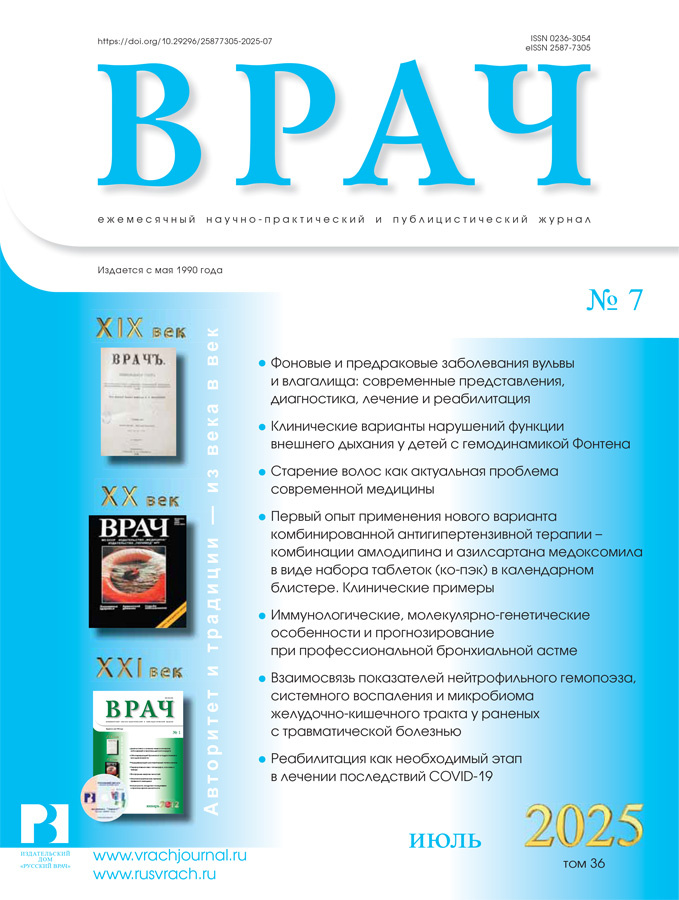Влияние комплексной физиотерапии на функциональное состояние и качество жизни у детей с болезнью Осгуда–Шлаттера: результаты рандомизированного клинического исследования
- Авторы: Емелин Ю.М.1,2, Кончугова Т.В.1, Марченкова Л.А.1
-
Учреждения:
- Национальный медицинский исследовательский центр реабилитации и курортологии Минздрава России
- Детская городская поликлиника №23 Департамента здравоохранения Москвы
- Выпуск: Том 36, № 7 (2025)
- Страницы: 62-66
- Раздел: Из практики
- URL: https://journals.eco-vector.com/0236-3054/article/view/689869
- DOI: https://doi.org/10.29296/25877305-2025-07-10
- ID: 689869
Цитировать
Полный текст
Аннотация
Цель. Оценить эффективность комплексного физиотерапевтического вмешательства (кальций-фосфор электрофорез и интерференцтерапия) у детей с болезнью Осгуда–Шлаттера по результатам опросников KOOS и SF-36.
Материал и методы. Обследованы 90 детей с болезнью Осгуда–Шлаттера, разделенные на 3 группы: контрольная (лечебная физкультура [ЛФК]), сравнительная (ЛФК + электрофорез), основная (ЛФК + электрофорез + интерференцтерапия). Для оценки динамики использовались анкеты KOOS и SF-36 до, после лечения и через 12 мес. Статистическая обработка включала t-критерий Стьюдента, U-критерий Манна–Уитни и критерий Уилкоксона.
Результаты. Основная группа продемонстрировала статистически значимое улучшение по всем шкалам KOOS и SF-36. Наиболее выраженные изменения отмечены по подшкале «Спорт и досуг» (KOOS) и доменам «Жизнеспособность», «Физическое функционирование» и «Боль» (SF-36). В группе сравнения эффект был умеренным, в контрольной – минимальным. Через 12 мес достигнутый результат сохранялся только в основной группе.
Заключение. Комплекс физиотерапевтических процедур с применением кальций-фосфор электрофореза и интерференцтерапии эффективен в реабилитации детей с болезнью Осгуда–Шлаттера, что проявляется устойчивым восстановлением функций и повышением качества жизни.
Ключевые слова
Полный текст
Об авторах
Ю. М. Емелин
Национальный медицинский исследовательский центр реабилитации и курортологии Минздрава России; Детская городская поликлиника №23 Департамента здравоохранения Москвы
Автор, ответственный за переписку.
Email: marchenkovala@nmicrk.ru
ORCID iD: 0009-0000-7943-3164
Россия, Москва; Москва
Т. В. Кончугова
Национальный медицинский исследовательский центр реабилитации и курортологии Минздрава России
Email: marchenkovala@nmicrk.ru
ORCID iD: 0000-0003-0991-8988
SPIN-код: 3198-9797
доктор медицинский наук, профессор
Россия, МоскваЛ. А. Марченкова
Национальный медицинский исследовательский центр реабилитации и курортологии Минздрава России
Email: marchenkovala@nmicrk.ru
ORCID iD: 0000-0003-1886-124X
SPIN-код: 9619-8004
доктор медицинских наук, доцент
Россия, МоскваСписок литературы
- Gaulrapp H. Clinical examination, imaging and therapy of Osgood-Schlatter's disease. Orthopade. 2016; 45 (3): 219–25. doi: 10.1007/s00132-016-3225-1
- Chandra R., Malik S., Ganti L. et al. Diagnosis and Management of Osgood Schlatter Disease. Orthop Rev (Pavia). 2024; 16: 121395. doi: 10.52965/001c.121395
- Чупина С.А., Усенко Е.В. Электрофорез с кальцием и фосфором в педиатрической практике. Вестник физиотерапии. 2021; 1: 12–8 [Chupina S.A., Usenko E.V. Electrophoresis with calcium and phosphorus in paediatric practice. Bulletin of physiotherapy. 2021; 1: 12–8 (in Russ.)].
- Николаев Ю.М., Власов Ю.В. Интерференционные токи в восстановительном лечении: методическое руководство. М.: МЕДпресс-информ, 2022; 144 с. [Nikolaev Yu.M., Vlasov Y.V. Interference currents in restorative treatment: methodological guide. M.: Medpress-informas, 2022; 144 p. (in Russ.)].
- Дюжикова Е.В., Меркулова С.А. ЛФК при заболеваниях опорно-двигательного аппарата у детей. М.: ГЭОТАР-Медиа, 2022; 208 с. [Duzhikova E.V., Merkulova S.A. Physiotherapy for musculoskeletal diseases in children. M.: GEOTAR-Media, 2022; 208 c. (in Russ.)].
- Зайцева Л.М., Ефимов А.А. Оценка качества жизни у подростков с заболеваниями опорно-двигательного аппарата. Вопросы современной педиатрии. 2022; 21 (5): 52–7 [Zaitseva L.M., Efimov A.A. Assessment of quality of life in adolescents with diseases of the musculoskeletal system. Voprosy sovremennoi pediatrii. 2022; 21 (5): 52–7 (in Russ.)].
- Абрамов А.Ю., Шляхтина Е.И. Роль микроэлементов в патогенезе и лечении заболеваний костной системы у детей. Педиатрия. 2019; 98 (4): 34–9 [Abramov A.Yu., Shlyakhtina E.I. Role of micronutrients in pathogenesis and treatment of diseases of the bone system in children. Pediatrics. 2019; 98 (4): 34–9 (in Russ.)].
- Кулакова Н.В., Чекалина С.Ю. Электрофорез в педиатрической практике: методическое руководство. М.: ГЭОТАР-Медиа, 2023; 112 с. [Kulakova N.V., Chekalina S.Y. Electrophoresis in pediatric practice: methodological guide. Moscow: GEOTAR-Media, 2023; 112 p. (in Russ.)].
- Alexander R.W., Freedman K.B. Calcium and phosphorus in pediatric bone health. J Pediatr Orthop. 2020; 40 (1): 12–8.
- Roos E.M., Lohmander L.S. The Knee injury and Osteoarthritis Outcome Score (KOOS): from joint injury to osteoarthritis. Health Qual Life Outcomes. 2003; 1: Art. 64. doi: 10.1186/1477-7525-1-64
- Ware J.E., Sherbourne C.D. The MOS 36-item Short-Form Health Survey (SF-36): I. Conceptual framework and item selection. Med Care. 1992; 30 (6): 473–83.
- Шевелева Н.В., Брагина Т.В. Реабилитация подростков-спортсменов при остеохондропатиях. М.: Научный мир, 2020; 176 с. [Sheveleva N.V., Bragina T.V. Rehabilitation of adolescent athletes with osteochondropathies. Moscow: Nauchny Mir, 2020; 176 p. (in Russ.)].
- Auleley G.-R., Hanon G., Dureuil B. Exercise therapy in juvenile osteochondroses: a systematic review. Ann Phys Rehabil Med. 2020; 63 (1): 5–12. doi: 10.1016/j.rehab.2019.09.003
- Grimmer K., Kay D., Stanley R. The effectiveness of physiotherapy for adolescent musculoskeletal pain: a systematic review. Phys Ther Rev. 2018; 23 (1): 3–9. doi: 10.1080/10833196.2018.1454024
- De Carlo M.S., Armstrong B. Rehabilitation of the knee following sports injury. Clin Sports Med. 2010; 29 (1): 81–106. doi: 10.1016/j.csm.2009.09.004
Дополнительные файлы






